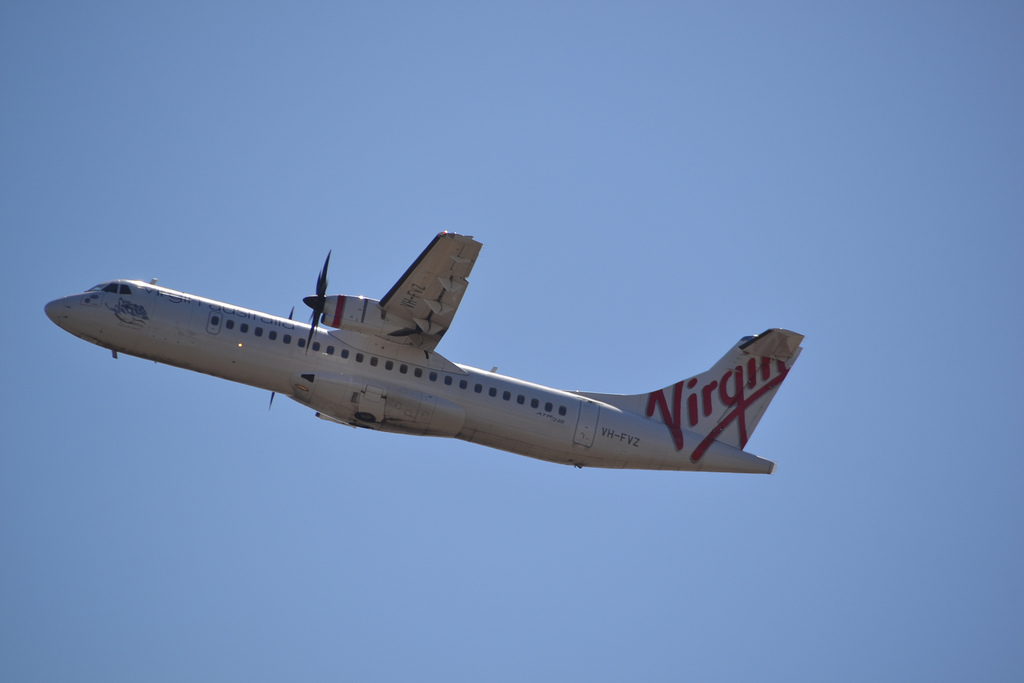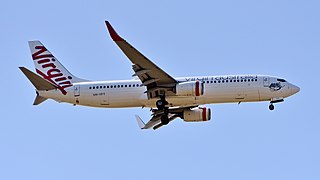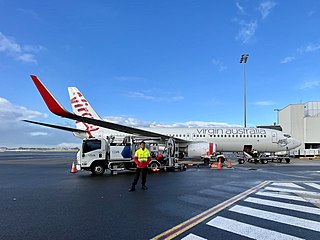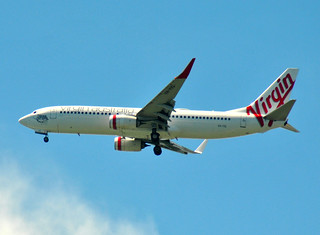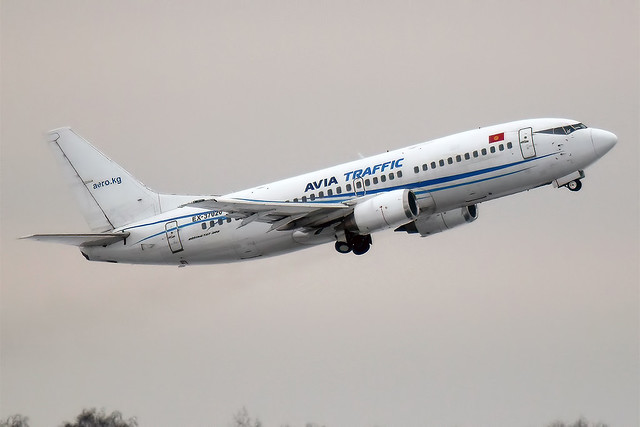Virgin Australia AT72 at Canberra on Nov 19th 2017, hard landing and tail strike
Last Update: November 12, 2019 / 14:53:36 GMT/Zulu time
Incident Facts
Date of incident
Nov 19, 2017
Classification
Accident
Cause
Hard landing
Airline
Virgin Australia
Flight number
VA-646
Departure
Sydney, Australia
Destination
Canberra, Australia
Aircraft Registration
VH-FVZ
Aircraft Type
ATR ATR-72-200
ICAO Type Designator
AT72
Airport ICAO Code
YSCB
Australia's TSB reported the aircraft sustained substantial damage, rated the occurrence an accident and opened an investigation.
On Jan 23rd 2018 the ATSB reported the captain was pilot monitoring, the first officer was pilot flying, in addition a check captain was on the observer seat conducting the annual line check on the captain. The crew conducted a visual approach to Canberra's runway 35 with a computed Vapp of 113 KIAS. The crew reported that at a height of 107 feet they were slightly above approach profile when they encountered turbulence and changing winds. The ATSB reported the FDR showed the airspeed increased to 127 KIAS, the first officer retarted the power levers to nearly flight idle in response. Within the next 9 seconds the rate of decent increased significantly and the speed reduced, the captain called twice for an increase in power and finally called a go around. The first officer responded by increasing power just as the aircraft hit the runway surface hard on main gear and aft fuselage. Assessing the aircraft was under control the captain immediately cancelled the go around, took control of the aircraft, rolled the aircraft out without further incident and taxied the aircraft to the gate. The captain made according entries in the tech log, a subsequent maintenance inspection revealed substantial damage.
The ATSB described the weather conditions: "Recorded weather observations at Canberra Airport indicated that at the time of the accident, there was scattered cloud at about 7,000 ft above mean sea level,[3] no precipitation, visibility in excess of 10 km, and a moderate north-easterly wind of about 16 kt. The approach to runway 35 passes over undulating higher ground, which can be a source of mechanical turbulence. The flight crew reported that they regularly experienced turbulence at all stages of approach and landing at Canberra."
On Nov 12th 2019 the ATSB released their final report concluding the probable causes of the accident were:
- During the approach, the pilot flying did not identify that the speed had exceeded the stabilised approach criteria, which required immediate correction or initiation of a go-around.
- In response to an assessment of overshoot shear, the pilot flying reduced power to idle at a height greater than that stipulated by operator procedures. This resulted in an abnormally high descent rate that was not reduced prior to touchdown.
- A significant change in the wind direction and strength immediately before the aircraft touched down further increased the aircraft's descent rate and contributed to the resultant damage.
- Verbal and physical intervention by the pilot monitoring did not prevent the hard landing.
The ATSB reported the first officer (ATPL, 1,320 hours total, 320 hours on type) was pilot flying, the captain (ATPL, 8,160 hours total, 1,900 hours on type) was pilot monitoring. A check captain was occupying the observer seat conducting the annual line check of the captain and six months line check of the first officer.
The first officer held the approach briefing prior to commencing the descent into Canberra, target approach speed into Canberra was computed at 113 knots, there was a cross winds from the right at 15 knots while landing on runway 35. The crew performed a visual approach to runway 35 in light turbulence, at 400 feet the first officer disconnected the autopilot and continued manually. Descending through 265 feet AGL the aircraft's speed decreased, the first officer increased power in response. Descending through 193 feet AGL the turbulence and increased power caused the aircraft's speed to increase reaching 127 KIAS at 118 feet AGL, 4 knots above the stabilized approach criteria. The ATSB wrote: "The PF did not recognise the stabilised approach criteria exceedance. However, having assessed the presence of overshoot windshear,3 he reduced the engine power to idle. The selection of idle power at that stage of the approach also did not comply with a further stabilised approach criteria requirement. As a result of the power reduction, the descent rate increased and the speed reduced. At about this time, the check captain recognised that the power setting was too low, but assessed that input from him would not assist in the recovery of the approach."
At about 50 AGL the vertical speed had increased to 784fpm, at 27 feet AGL and two seconds prior to touch down the aircraft encountered a wind shift. The ATSB wrote: "The PF and PM both reported that they felt a sudden increase in descent rate at that point. In response, the PM immediately called more urgently for an increase in power and manually intervened by advancing the power levers slightly, increasing power on both engines from 1.5 per cent torque to 3 per cent torque. Two seconds later, anticipating a bounced landing, the PM instructed the PF to commence a go-around. However, almost immediately the aircraft touched down at a normal pitch attitude, but heavily on the main landing gear, tail skid and underside of the rear fuselage (Figure 1). The aircraft did not bounce and the PM cancelled the go-around, took control and completed the landing roll."
The ATSB reported there were no injuries, the aircraft however sustained substantial damage.
The ATSB analysed: "The continuation of the approach when a go-around should have been conducted allowed the subsequent conditions to develop, leading to the hard landing."
With respect to the captain and check captain the ATSB analysed:
After the power was reduced to flight idle, the PM identified that the power was incorrectly set. In an attempt to recover the approach, the PM twice called for an increase in power and then subsequently manually increased power. The first call was acknowledged by the PF, however no corrective action was taken, possibly due to his focus on controlling the aircraft. The second call occurred too late to enable a response from the PF and the physical intervention also occurred too late to alter the aircraft trajectory.
The captain held the first officer in high regard; this may have increased the captain’s confidence the first officer would recover the undesirable aircraft state. The captain also reported that during check flights, he had a tendency to modify his behaviours and allow first officers more margin than normal when correcting deviations in the operation of the aircraft in order to prevent any adverse impact on the check flight assessment of the first officer. These factors may have delayed or reduced the intervention by the captain.
Orasanu (2010) outlines that analytical decision making is difficult if not impossible in high risk environments (such as aviation) where there is limited time and information and where conditions change unexpectedly.
In this occurrence, the PM needed to make a quick decision on how to recover the approach. Due to the limited time available in the final phase of approach and a perception that the condition of the aircraft would not lead to a significant event, the PM attempted a verbal correction of the aircraft state. The verbal intervention did not result in a correction and the unstable approach continued. Just prior to touchdown, the PM also attempted a physical intervention but it came too late to prevent the hard landing.
The check captain reported that he recognised the approach was unstable. While the operator’s guidance permitted intervention in some circumstances, the check captain assessed that the approach and landing, while ‘untidy’, would be safe. Additionally, he reported that he did not call for a go-around as he was not part of the operating crew and had assessed that a call from the rear of the cockpit may have distracted the flight crew in the critical phase of flight.
The ATSB concluded analysis by assessing the wind shift and actual touchdown writing: "The already high descent rate of 784 ft/min, combined with the wind change, led to the aircraft reaching a recorded 928 feet per minute at touchdown, resulting in the 2.97 G hard landing and substantial damage to the aircraft."
Metars:
YSCB 190400Z 06013KT 9999 SCT055 22/09 Q1023 NOSIG=
YSCB 190330Z 08013KT 9999 SCT055 SCT250 22/09 Q1023 NOSIG=
YSCB 190300Z 06010KT 040V110 9999 SCT052 SCT250 22/09 Q1023 NOSIG=
YSCB 190230Z 07011KT 030V090 9999 SCT050 SCT240 22/09 Q1023 NOSIG=
YSCB 190200Z 10013KT 9999 SCT050 SCT240 21/08 Q1024 NOSIG=
YSCB 190130Z 10011KT 040V130 9999 SCT052 SCT250 21/08 Q1024 NOSIG=
YSCB 190100Z 08014KT 040V100 9999 SCT048 SCT240 22/07 Q1024 NOSIG=
YSCB 190030Z 11012KT 030V120 9999 SCT046 SCT240 21/09 Q1024 NOSIG=
YSCB 190000Z 10011KT 9999 SCT044 SCT240 20/09 Q1024 NOSIG=
YSCB 182330Z 08012KT 9999 FEW040 SCT240 19/08 Q1024 NOSIG=
YSCB 182300Z 06010KT 9999 FEW040 SCT240 19/08 Q1024 NOSIG=
YSCB 182230Z 05009KT 9999 FEW038 SCT240 19/07 Q1024 NOSIG=
YSCB 182200Z 09012KT 9999 FEW035 SCT240 18/07 Q1024 NOSIG=
Incident Facts
Date of incident
Nov 19, 2017
Classification
Accident
Cause
Hard landing
Airline
Virgin Australia
Flight number
VA-646
Departure
Sydney, Australia
Destination
Canberra, Australia
Aircraft Registration
VH-FVZ
Aircraft Type
ATR ATR-72-200
ICAO Type Designator
AT72
Airport ICAO Code
YSCB
This article is published under license from Avherald.com. © of text by Avherald.com.
Article source
You can read 2 more free articles without a subscription.
Subscribe now and continue reading without any limits!
Read unlimited articles and receive our daily update briefing. Gain better insights into what is happening in commercial aviation safety.
Send tip
Support AeroInside by sending a small tip amount.
Related articles
Virgin Australia B738 at Sydney on Mar 10th 2023, hard touch down at 3G
A Virgin Australia Boeing 737-800, registration VH-YQR performing flight VA-916 from Brisbane,QL to Sydney,NS (Australia) with 179 passengers and 6…
Virgin Australia B738 at Cairns on Oct 24th 2022, descended below minimum safe height
A Virgin Australia Boeing 737-800, registration VH-VUT performing flight VA-793 from Brisbane,QL to Cairns,QL (Australia), was on a RNAV HENDY 8A…
Virgin Australia B738 at Sydney on Oct 19th 2022, verbal slip in clearance
A Virgin Australia Boeing 737-800, registration VH-YFT performing flight VA-942 from Brisbane,QL to Sydney,NS (Australia), reached the top of descent…
Virgin Australia B738 at Coolangatta on Jan 24th 2023, long landing
A Virgin Australia Boeing 737-800, registration VH-YQM performing flight VA-539 from Sydney,NS to Coolangatta,QL (Australia), landed on Coolangatta's…
Virgin Australia B738 at Perth on Jan 11th 2023, flaps problem
A Virgin Australia Boeing 737-800, registration VH-YIQ performing flight VA-469 from Perth,WA to Brisbane,QL (Australia), was climbing out of Perth's…
Newest articles
JSX E145 at Houston on May 3rd 2024, gear collapse and runway excursion on landing
A JSX Embraer ERJ-145, registration N942JX performing flight XE-284 from Dallas Love,TX to Houston Hobby,TX (USA) with 21 passengers and 3 crew on…
Avia Kyrgyzstan B733 at Bishkek on May 4th 2024, bird strike
An Avia Traffic Company Kyrgyzstan Boeing 737-300 on behalf of Tez Jet Airlines, registration EX-37020 performing flight K9-117 from Bishkek to Osh…
Subscribe today
Are you researching aviation incidents? Get access to AeroInside Insights, unlimited read access and receive the daily newsletter.
Pick your plan and subscribePartner

A new way to document and demonstrate airworthiness compliance and aircraft value. Find out more.

ELITE Simulation Solutions is a leading global provider of Flight Simulation Training Devices, IFR training software as well as flight controls and related services. Find out more.

Your regulation partner, specialists in aviation safety and compliance; providing training, auditing, and consultancy services. Find out more.
AeroInside Blog
Popular aircraft
Airbus A320Boeing 737-800
Boeing 737-800 MAX
Popular airlines
American AirlinesUnited
Delta
Air Canada
Lufthansa
British Airways
